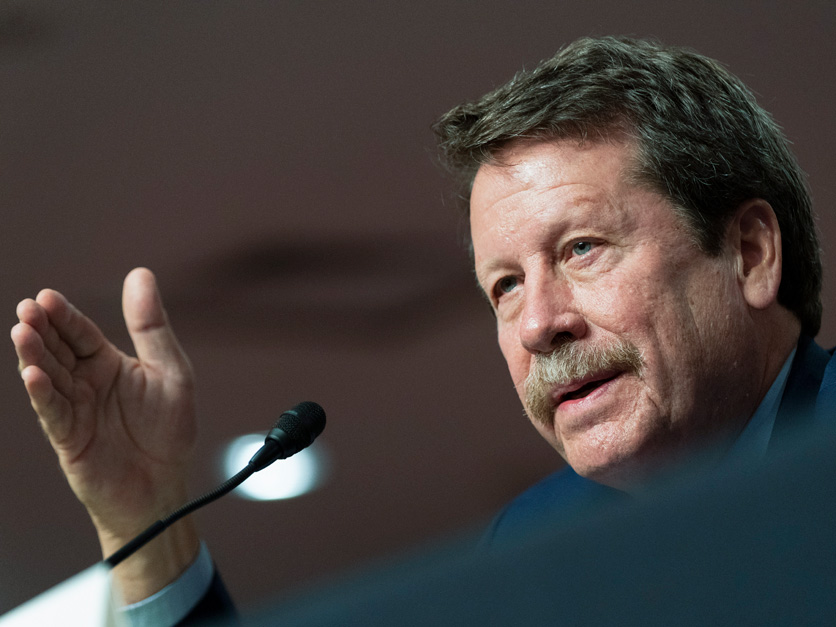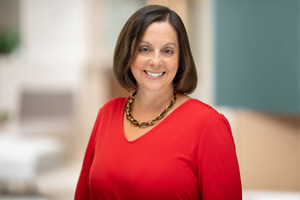FDA Commissioner Robert Califf insists his plan to create a Humans Foods Program in the agency will fundamentally transform the way FDA oversees the U.S. food supply, but some industry groups and consumer advocates say his proposal doesn't go far enough to unify the agency's fractured leadership.
Although the plan calls for a deputy commissioner for foods, something supported by a diverse array of groups, it's not clear whether that person would have the power to take needed action as well as determine budget resources to do what is required to transition the agency to a more preventative approach in addressing food safety.
Another reason for the tepid response in some parts of the food and ag industries is that the new program would not include the Center for Veterinary Medicine, which regulates animal feed and animal biotechnology. There's also concern that only part of the Office of Regulatory Affairs would be moved into the Human Foods Program.
Mitzi Baum, CEO of Stop Foodborne Illness, said she doesn’t believe the actions as outlined are a “fulfilled opportunity” coming out of the recommendations made in the Reagan-Udall Foundation report and offered by stakeholders and lawmakers.
“The deputy commissioner is something that we absolutely called for, but it’s not a complete solution for the fragmented program," she said.
But she said FDA could still make some bolder moves as it formulates further details of its plan over the month of February.
Last week, Frank Yiannas resigned as the deputy commissioner of food policy and response and called in a letter for creation of a “more integrated operating structure and a fully empowered and experienced deputy commissioner for foods, with direct oversight of those centers and offices responsible for human and animal foods."
FDA Principal Deputy Commissioner Janet Woodcock said on a media call with Califf Tuesday that the new Human Foods Program combines the functions of the Center for Food Safety and Applied Nutrition and the Office of Food Policy and Response with certain functions of the Office of Regulatory Affairs.
Woodcock said the new deputy foods commissioner will “be charged with leading the FDA’s ambitious plan to ensure the foods we regulate are safe, nutritious, and have good quality while keeping the agency on the cutting edge of the latest advancements in food science.”
 FDA Commissioner Robert Califf (AP Photo/Manuel Balce Ceneta)
FDA Commissioner Robert Califf (AP Photo/Manuel Balce Ceneta)When asked what characteristics he is seeking in the national search he announced for a future deputy commissioner of foods, Califf said it will need to be an “unusual person who can really deal with the complexity of the foods enterprise spanning all the way from human nutrition to infant formula all the way up to bacterial safety on the farm and everything in between.”
The position will also require strong leadership capabilities to implement the needed changes required to turn a page on the organizational and culture challenges facing FDA, Califf said, and have a feel for the operational issues involved. “I’ve been talking with a lot of people over the last three months, and there are highly qualified people,” he said.
Califf said FDA seriously considered suggestions that the new deputy commissioner have line authority, but that the complexity of an organization like the FDA demands carefully considering how different divisions relate to each other and joint responsibility of how decisions are handled.
Califf insisted the Center for Veterinary Medicine should continue to operate as a standalone division of FDA.
“The majority of the Center for Veterinary Medicine work is animal drugs and devices, which is more like the Center for Drugs and Center for Devices on the human side. I wouldn’t want the deputy commissioner for foods to be making decisions about therapeutic antibodies for cats or devices for animals,” he said.
The Animal Feed Industry Association welcomed the decision to keep CVM separate. In a tweet, AFIA commended Califf for “recognizing the unique needs of the animal food industry by maintaining a clear line of sight with” CVM for the regulation of animal food, drugs and medical devices.
Woodcock said the proposed CVM structure will also allow it to support the Human Foods Program where its health activities are directly relevant to human food safety.
De Ann Davis, senior vice president of science for Western Growers, told Agri-Pulse one initial reservation she has about the proposal is it did not assign direct accountabilities for CVM. “There's a really important aspect to what goes on in the animal space to human foods.” That “dotted line” of authority of only some of CVM’s activities under the new Human Foods Program “causes some pause,” Davis said.
Joseph Scimeca, senior vice president of regulatory and scientific affairs for the International Dairy Foods Association, said in a statement that they are disappointed in the CVM decision, “where there is significant overlap with human health.”
Scimeca added, “Details will matter in how the new deputy commissioner manages the reorganized Human Foods Program, and the proof will be in the pudding.”
The shift of only part of the Office of Regulatory Affairs into the new Human Foods Program also raised some concerns for stakeholders. “The bigger reservation really falls into the relationship between the Human Foods Program and the ORA leadership,” Davis said.
Roberta Wagner, Consumer Brands Association's vice president of regulatory and technical affairs, told Agri-Pulse ORA has control of 70% of the foods program budget. She said she would feel more comfortable with the direction FDA is headed with the hiring of a new deputy commissioner, if the individual had sufficient funding to carry out needed culture and organizational changes. But industry groups continue to call for increased transparency in how FDA dollars are spent.
Wagner, who spent 28 years at FDA, said, “If you really look at this from an insider's perspective, this isn't a lot of change.” Wagner said she would argue that the newly created deputy commissioner position has “less authority than previous deputy commissioners for foods because at least they had authority over CVM and CFSAN.”
Wagner sees the new organizational chart no different than before. There would be three separate “silos” with the associate or deputy commissioners at ORA, CVM and now a new Human Foods Program reporting to the commissioner, “except now you don’t have this other deputy commissioner that was sitting in the commissioner’s office,” she said of Yiannas’ position that is no more.
 Sarah Gallo, CBA
Sarah Gallo, CBASarah Gallo, CBA's vice president of product policy, added the options laid out in the culture section of the Reagan-Udall report “really hit the nail on the head with the changes that needed to be made and in supporting those structural options in order to tear down the silos and create the meaningful reforms that we’re all looking for,” she said.
Interested in more coverage and insights? Receive a free month of Agri-Pulse by clicking on our link!
She said leaving out the inclusion of CVM or ORA in proposed reforms misses out on the opportunity to make those culture changes called for in the report. “A few people here and there is not going to shift the culture to one that is working together for the betterment of the safety of the food system,” Gallo said.
The plan also calls for FDA to form a new Center for Excellence in Nutrition as well as a Human Foods Advisory Committee which will advise agency leaders on challenging emerging issues and food safety, nutrition and innovative food technology, Woodcock said. IDFA was pleased to see the FDA move to reestablish a feedback loop from external experts through the advisory committee, Scimeca said.
The plan also establishes the Office of Integrated Food Safety System Partnerships to assist state and local regulatory agencies in creating the integrated food safety system envisioned in the Food Safety Modernization Act of 2011.
Davis said for the produce sector specifically, that new partnership with states is “incredibly important because that helps us have a more direct line in between the states as well as the FDA in terms of resources that are provided to the states for food safety.”
Woodcock, who has been with the agency for 35 years, said she’s spearheading an implementation and change management group that's focused on developing detailed plans to ensure the successful execution of this program. “We look forward to sharing further details next month,” she said.
Steven Grossman, executive director of the Alliance for a Stronger FDA, believes the plan offers “a good down payment” on how the agency will address the lack of empowered leadership in food safety and nutrition. He sees Woodcock’s current role as “transitional but vital” because she is “experienced and talented at putting the pieces together” on reorganizations and changes in program direction.
For more news, go to www.Agri-Pulse.com


